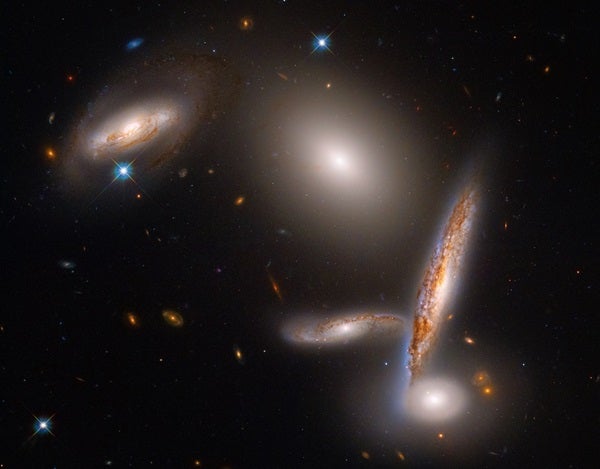For its 32nd birthday, the Hubble Space Telescope received five gifts in the form of a quintet of unique galaxies huddling together to create Hickson Compact Group 40 (HCG 40).
Since being launched into orbit April 25, 1990, the telescope has viewed over 50,000 celestial objects and captured 1.5 million photos. To mark its accomplishments, NASA has released an image of the brilliant phenomenon of HCG 40 slowly melding to form one large galaxy, a process that will take over a billion years.
This grouping is composed of three spiral galaxies juxtaposed with an elliptical and a lenticular, or lens-shaped, galaxy. These celestial bodies span a region almost twice the size of the Milky Way, located within in the constellation Hydra the Water Snake, roughly 15 million light-years away. Through X-ray, radio, and infrared observations with other observatories, astronomers have found that the galaxies are gravitationally interacting, heating the gas swirling around them.
Although HCG 40 is far from the only tight grouping of galaxies in the sky, it is one of the most compact observed thus far. The formation leaves clues about the history of the universe and when galaxies began to form. It also hints at the presence of dark matter within the region: Maybe plowing through the invisible stuff is what caused the galaxies to lose momentum and fall towards each other in the first place.
As for the birthday telescope, it is unlikely it has another 32 years left in orbit, but NASA continues to manage the craft and is planning for it to continue operating through the late 2020s and perhaps beyond.










